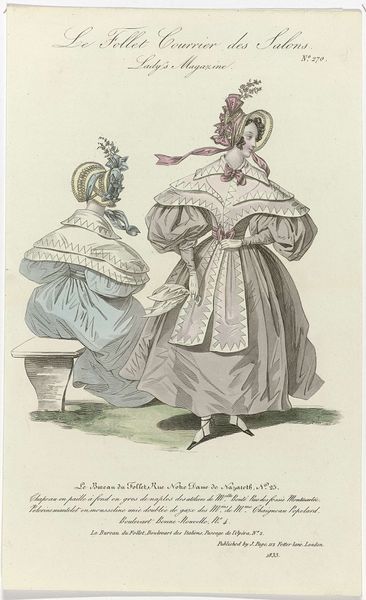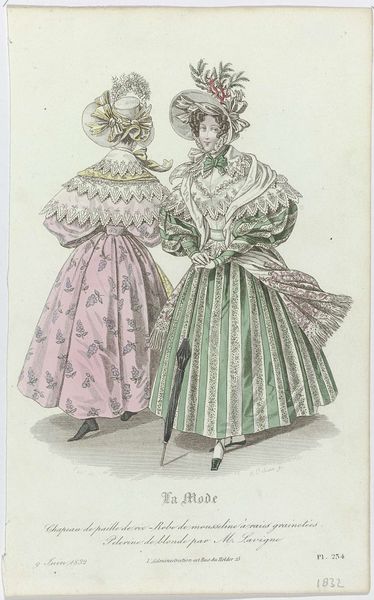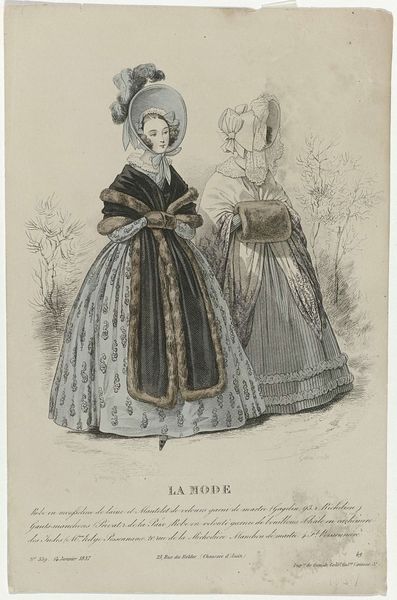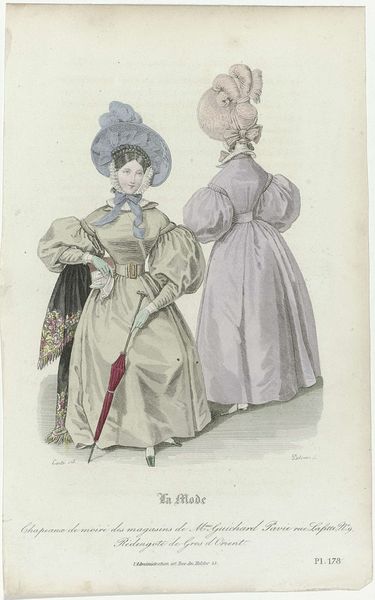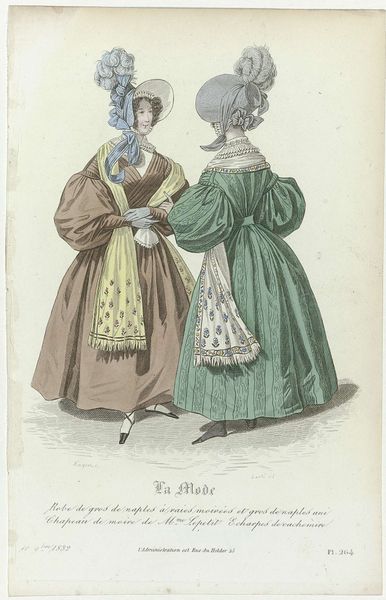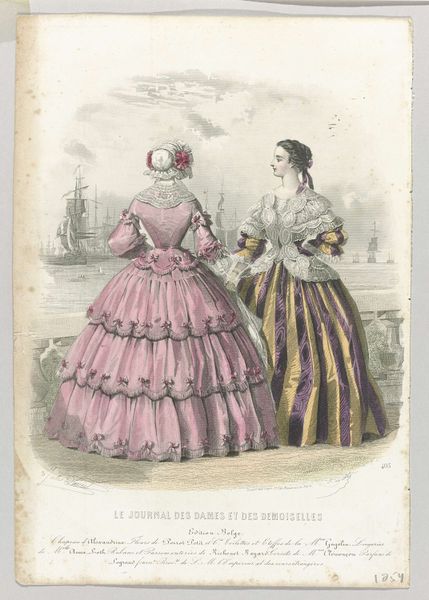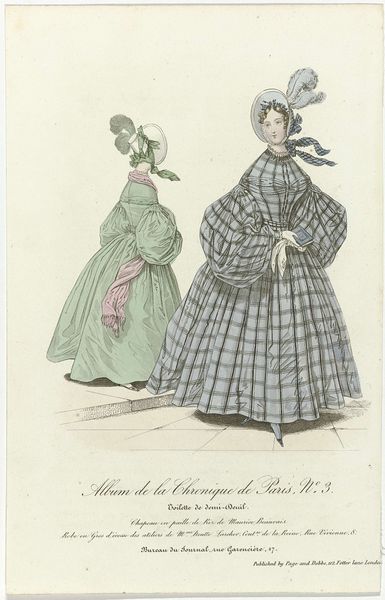
lithograph, print
#
portrait
#
lithograph
# print
#
figuration
#
romanticism
#
genre-painting
#
dress
Dimensions: height 223 mm, width 142 mm
Copyright: Rijks Museum: Open Domain
Jean Alexandre Allais created this fashion plate, titled 'La Mode', in France on July 19, 1834. It’s made with a combination of etching and engraving, and then delicately hand-colored. The print showcases the fashionable silhouette of the 1830s, emphasizing the luxurious materials available to the upper classes. “Pou de soie” translates to "silk taffeta," used for both bonnets and dresses. The lightness and sheen of silk taffeta created a sense of refinement. Note the meticulous detail in the lace trim and floral patterns, achieved through skilled handiwork, highlighting the importance of textiles in conveying status and taste. Fashion plates like this one fuelled the era's booming textile industry, employing countless artisans in the production of fabrics, lace, and embellishments. These images not only dictated style but also perpetuated social and economic hierarchies, shaping the desires and aspirations of consumers in a rapidly changing world. Recognizing the labor and materials enmeshed in this image reminds us of the social and economic forces that shape our aesthetic choices.
Comments
No comments
Be the first to comment and join the conversation on the ultimate creative platform.




